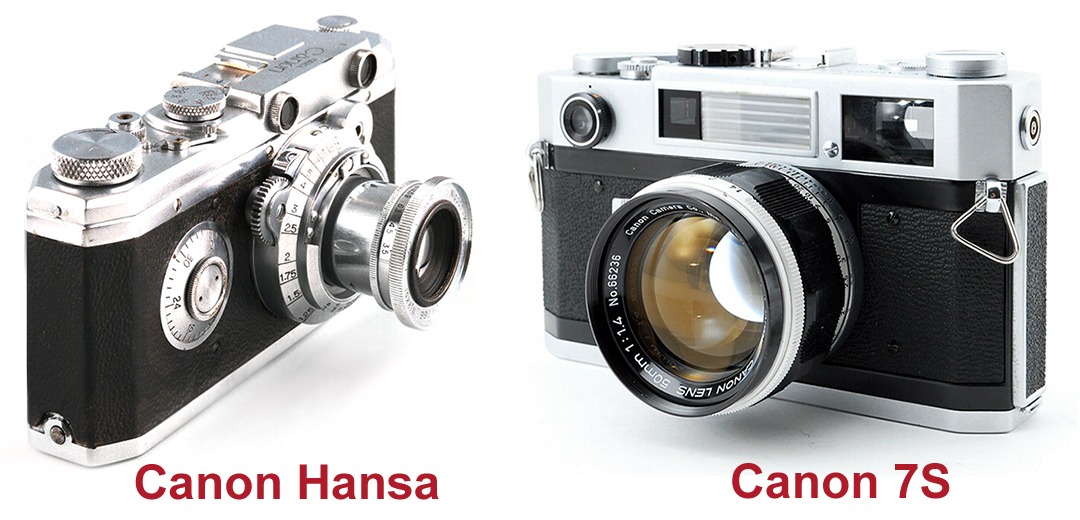The Canon Rangefinders – Goro Yoshida Steals from Leica
OK. Avid Canon fanboys and Leicaphiles,…don’t get angry with me. These are just quotes directly from the Canon History website. Engineer Goro Yoshida disassembled a Leica model II in 1932-1933. He found that the camera, which sold for more than half a year salary of a well-paid upper middle class Japanese worker, was not very unique or complicated in it’s construction. Or, to quote Yoshida;
“I just disassembled the camera without any specific plan, but simply to take a look at each part. I found there were no special items like diamonds inside the camera. The parts were made from brass, aluminum, iron and rubber. I was surprised that when these inexpensive materials were put together into a camera, it demanded an exorbitant price. This made me angry.”
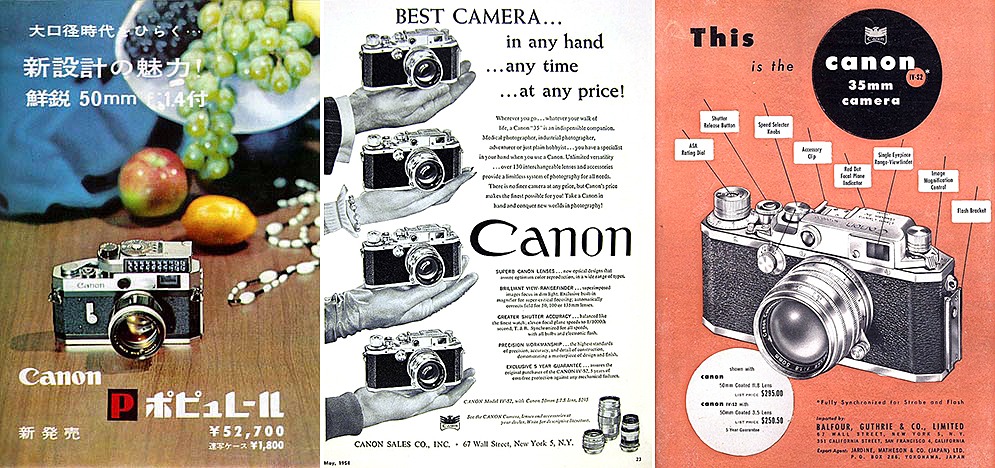
I don’t think he was saying it wasn’t a fine piece of craftsmanship. Just,…it’s out of the reach of most Japanese people. So, in 1933, with Saburo Uchida and Takeo Maeda, Yoshida established Seiki-Kōgaku Kenkyusho to develop a Leica-like 35mm rangefinder camera. I personally wouldn’t call it “stealing”. Maybe “building a better mouse trap”. (and less expensive)
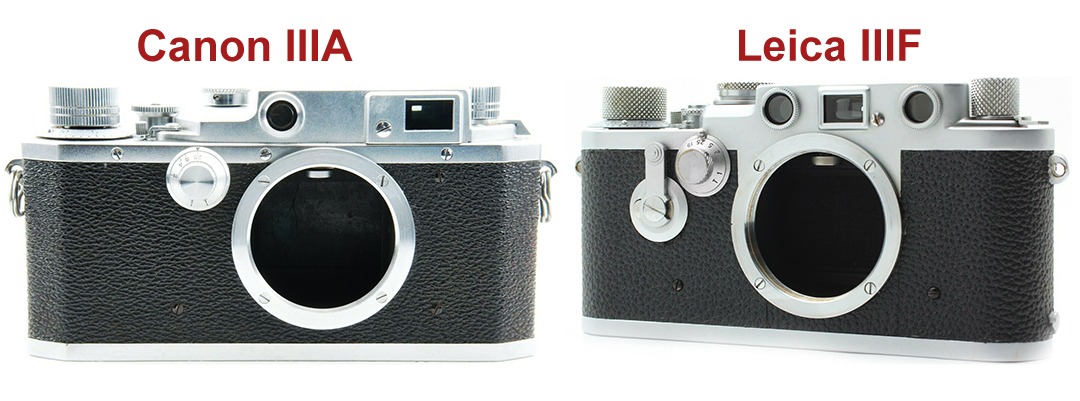
Actually, Yoshida himself left the company shortly after because of disagreements in actual production standards being employed. Less Leica-like? Who knows. “Kwanon”,(Canon), went forward, and Uchida with Maeda had a production ready design by 1934. It was at this time that outside investors suggested the name change to “Canon”. After getting together with the sole Japanese lens maker, Nippon Kōgaku, (Nikon!), this first design was introduced to the Japanese market in February 1936.
When Nikon and Canon Were Buddies
Seiki-Kōgaku Kenkyusho, which was to become Canon, had a close relationship with Nippon Kōgaku. Nippon Kōgaku was the only Japanese manufacturer of camera glass at that time. Of course, their lenses later became known as ‘Nikkor’. Nippon Kōgaku had been created in 1917, during World War I, and was mostly financed by the Imperial Japanese Armed forces and Mitsubishi. At the time, (mid-1930’s), Nippon Kōgaku were making lenses for large format cameras, telescopes and military range-finders. So, they were originally a “defense contractor”. No cameras yet. Nikon didn’t launch their own cameras and lenses until after WWII. (1948)
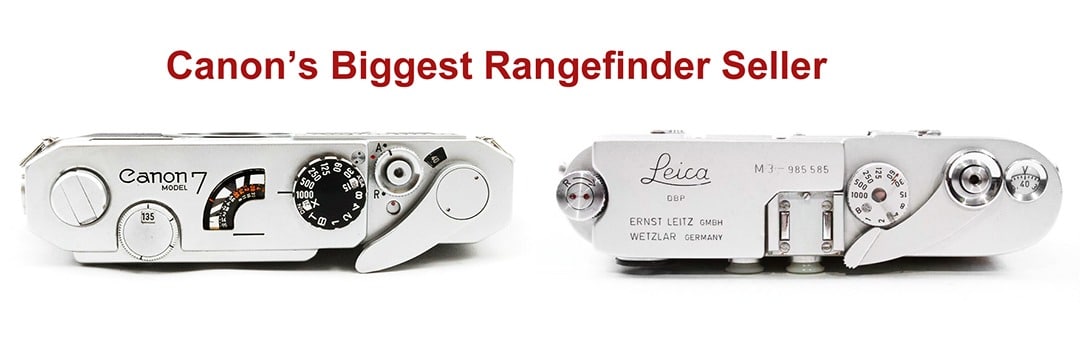
Now the cool part. Zeiss of Germany held all the patents on the production of optical glass, including the illustrious Tessar designs. (which is actually a pretty complicated process to produce) Since Japan and Germany were so buddy-buddy at the time, Japan honored those patents. So, Japan’s Armed Forces paid Zeiss for those patents. Which gave Nippon Kōgaku direct access to those designs and manufacturing procedures. Hence, the 50mm, (5cm), 1:3.5 Nikkor produced for the Hansa Canon was a direct offshoot of the Zeiss Tessar! It appears everything emanated from Germany. Even today, Nikon admits that those original materials, polishing and production techniques were imported, and patterned after the Zeiss Tessar designs. (not Leica) Nippon Kōgaku also provided the focusing mount and the viewfinder/rangefinder design. It’s almost like Nikon and Canon were one company at the time. 😁
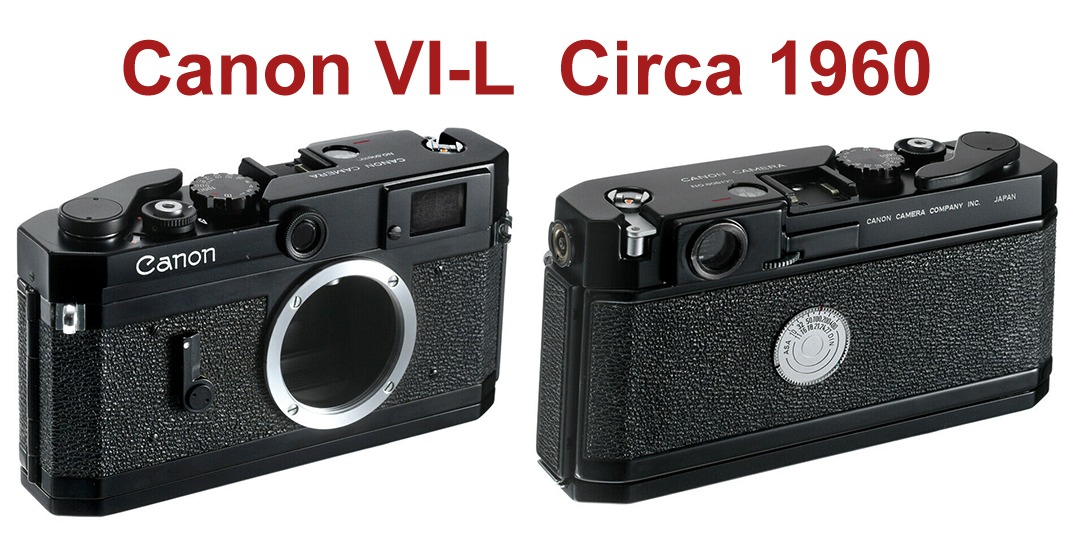
From Kwanon To Canon
Kwanon? Well, that would have been a marketing disaster. I doubt there were many consumers who could relate to an Elmer Fudd camera. Sometimes Asian words don’t translate well to Western languages. Phuket, Thailand, anyone? And this was way before the war. So, the company, now known as Canon, had exceptional foresight 85 years ago.
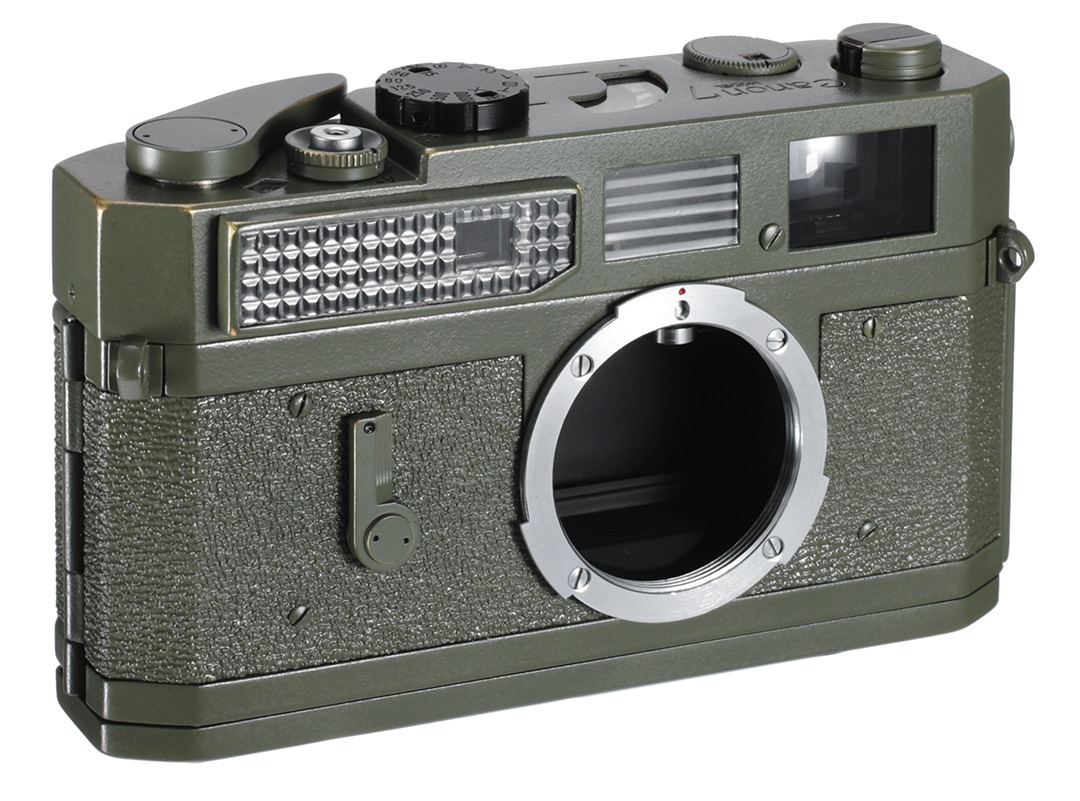
Canon Rangefinder Cameras Get Sophisicated
As Leica started producing more sophisticated cameras, (Leica M3), Canon Rangefinders weren’t far behind. With Japanese improvements, of course. And then came the first Nikon Rangefinder. (Nikon 1, 1948)
| Canon Rangefinder Models | Years |
|---|---|
| Canon Hansa | 1935-1939 |
| Canon S | 1939-1944 |
| Canon J | 1939-1944 |
| Canon NS | 1940-1942 |
| Canon JS | 1941-1945 |
| Canon S-I | 1945-1946 |
| Canon J-II | 1946 |
| Canon S-II | 1946-1949 |
| Canon IIB | 1949-1952 |
| Canon III, IIC, IV | 1951 |
| Canon IIIA, IVF, IVS | 1952 |
| Canon IIA, IID, IID1 | 1952-1955 |
| Canon IVSB | 1952-1953 |
| Canon IIF, IIS | 1953-1955 |
| Canon IIAF, IIAX | 1953-1954 |
| Canon IVSB2 | 1954-1956 |
| Canon IIS2, IID2, IIF2 | 1955-1956 |
| Canon VT, Canon L2 | 1956-1957 |
| Canon L1, L3 | 1957 |
| Canon VT Deluxe | 1957-1958 |
| Canon VL, VL2 | 1957-1958 |
| Canon VI-L, VI-T | 1958-1961 |
| Canon P | 1959-1961 |
| Canon 7 | 1961-1964 |
| Canon 7s | 1965-1968 |
While Nikon started much later, and produced many less models of rangefinders, they were quite popular with war photographers and other types of photojournalists. And they didn’t totally abandon manufacturing the 35mm rangefinder camera until 2005! But, as good as the Canon and Nikon rangefinders were, Leica remained king in most photographer’s minds.
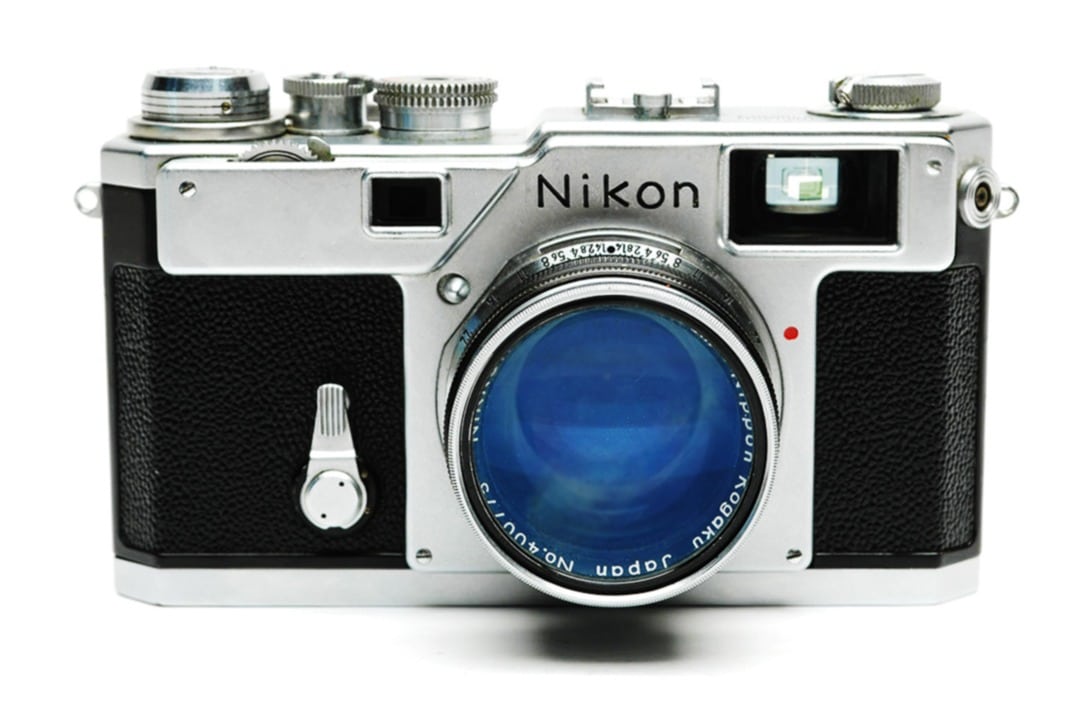
| Nikon Rangefinder Models | Release Date |
|---|---|
| Nikon 1 | 1948 |
| Nikon M | 1950 |
| Nikon S | 1951 |
| Nikon S2 | 1954 |
| Nikon SP | 1957 |
| Nikon S3 | 1958 |
| Nikon S4 | 1959 |
| Nikon S3M | 1960 |
| Nikon S3 Limited Edition | 2000 |
| Nikon S3 Limited Edition Chrome/Black Paint | 2000 |
| Nikon SP Limited Edition Black | 2005 |
The First
The first commercial release of the camera, (available to the general public), was in 1936, and included a Nikkor lens, lens hood, 2 film magazines and case. It was 275 Yen. (about $2.50) As opposed to a Leica II with 50mm 3.5 Elmar lens, which was about £26. And a Leica III was over £30! I’m unsure of the conversion rate to Yen at the time, but I believe it was at least 10x as expensive as the Canon. I’m sure some smarty will correct me in the comments,…but it was a substantial difference.
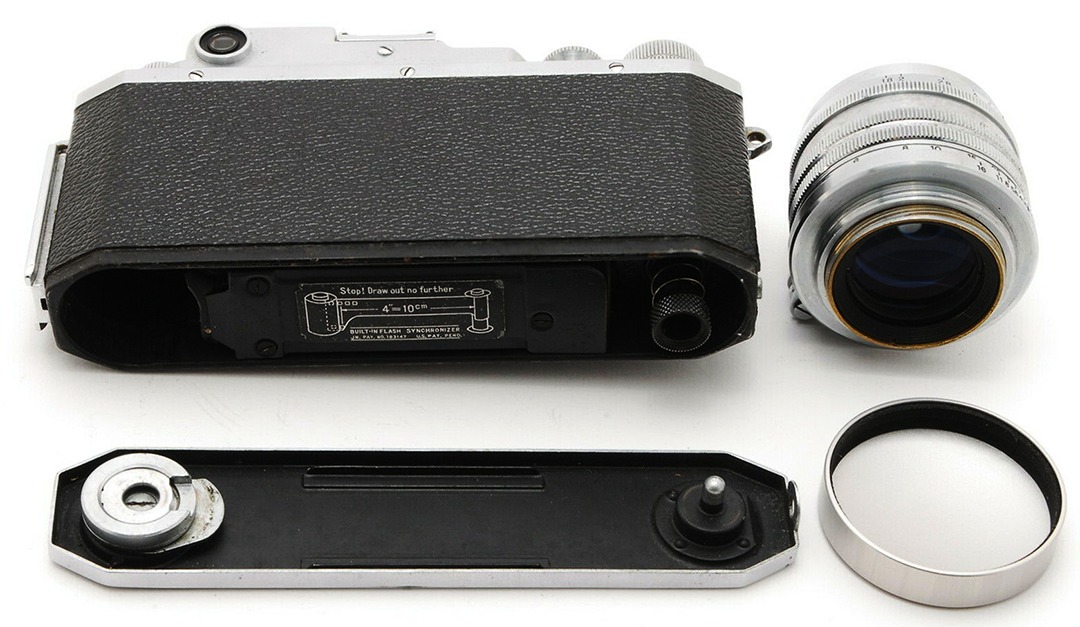
Actually, some of these Canon models are quickly becoming quite desireable. With prices starting to reflect that desire. And while the designs changed over time to reflect Japanese sensibilities, (film loading, etc.), many of these models will be the closest thing to a Leica for many. Even for a William Eggleston. (who owns a plethora of both Leica and Canon rangefinders)
Canon Hansa (Standard) Specifications
| Type | 35mm focal-plane shutter |
| Picture Size | 24 x 36 mm |
| Normal Lens | Nikkor 50mm f/3.5 (Tessar with 4 elements in 3 groups) |
| Lens Mount | Bayonet mount with three inner lugs for interchangeable lenses |
| Shutter | Two-axis, horizontal-travel focal-plane shutter with cloth curtains. Single-axis rotating dial for Z (Zeit or bulb), 1/20, 1/30, 1/40, 1/60, 1/100, 1/200, 1/500 sec |
| Viewfinder | Coincidence rangefinder and separate reversed Galilean pop-up viewfinder. Focusing enabled with rotating gear (with stopper released) |
| Film Loading & Advance | After baseplate removal, drop-in bottom loading. Advances with camera-top knob |
| Frame Counter | Manually set from 0 to 36 on camera front |
| Film Rewind | Camera-top knob |
| Dimensions & Weight | 136.5 x 69 x 31 mm, 640 g (with Nikkor 50mm f/3.5) |

